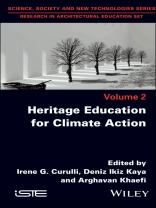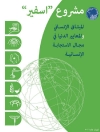Cultural heritage is increasingly recognized for its contributions to the transition to climate action, and heritage education can play an important role in developing climate adaptation competencies. These can foster positive dialogs surrounding climate change, shift attitudes and inspire actions. However, achieving these goals requires bridging the gap between policy, practice and local capacity building, as well as integrating a multi- and transdisciplinary approach into traditional higher education curricula and models.
Bringing together knowledge, practice and experiences from different disciplinary silos, this book provides a wide set of innovative teaching and learning methods, tools and pedagogical models that can be adapted to heritage education in order to address climate issues. Organized into four parts, Heritage Education for Climate Action covers a wide array of international experiences, real-life cases and practices, focusing on heritage and resilience building, vulnerability and risk assessment, climate change adaptation, mitigation and policymaking.
This book is therefore a source of suggestions and ideas for scholars, educators and professionals who want to develop future climate leadership and contribute to the transition of heritage education toward sustainable development and climate action.
Об авторе
Irene G. Curulli is a practicing architect and landscape architect, with a research and teaching focus on resilient industrial heritage waterscapes. She coordinates the e-CREHA project as well as other multi-disciplinary ERASMUS+ projects and international workshops.
Deniz Ikiz Kaya is Assistant Professor in Heritage and Climate Change at Eindhoven University of Technology (TU/e), the Netherlands. Her research focuses on the nexus of cultural heritage and climate change.
Arghavan Khaefi holds an M.Sc in Architecture and Building Planning from Eindhoven University of Technology (TU/e), the Netherlands. She has been involved in curatorial research and exhibition designs and is interested in contemporary issues reflected in the built environment.












